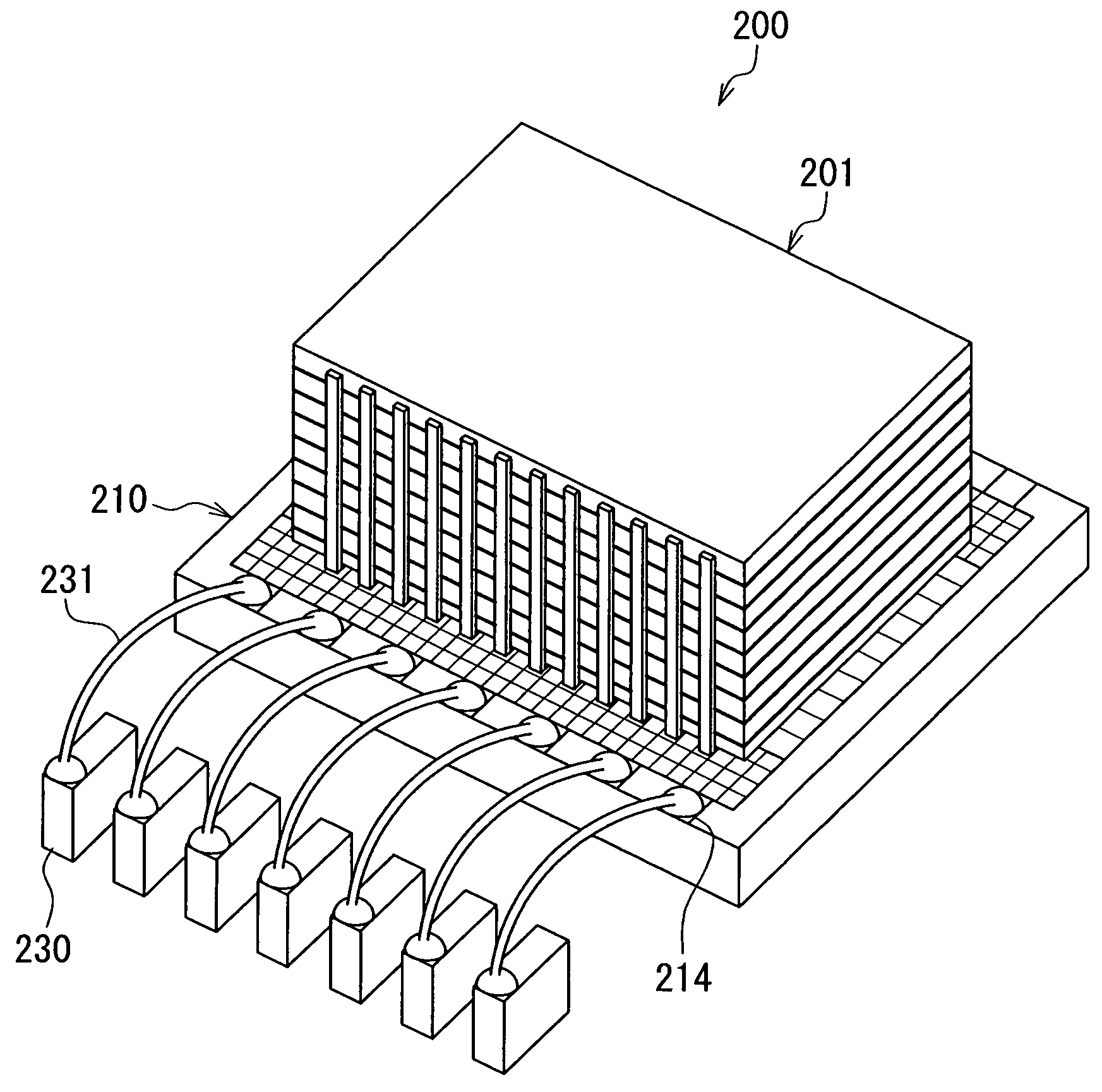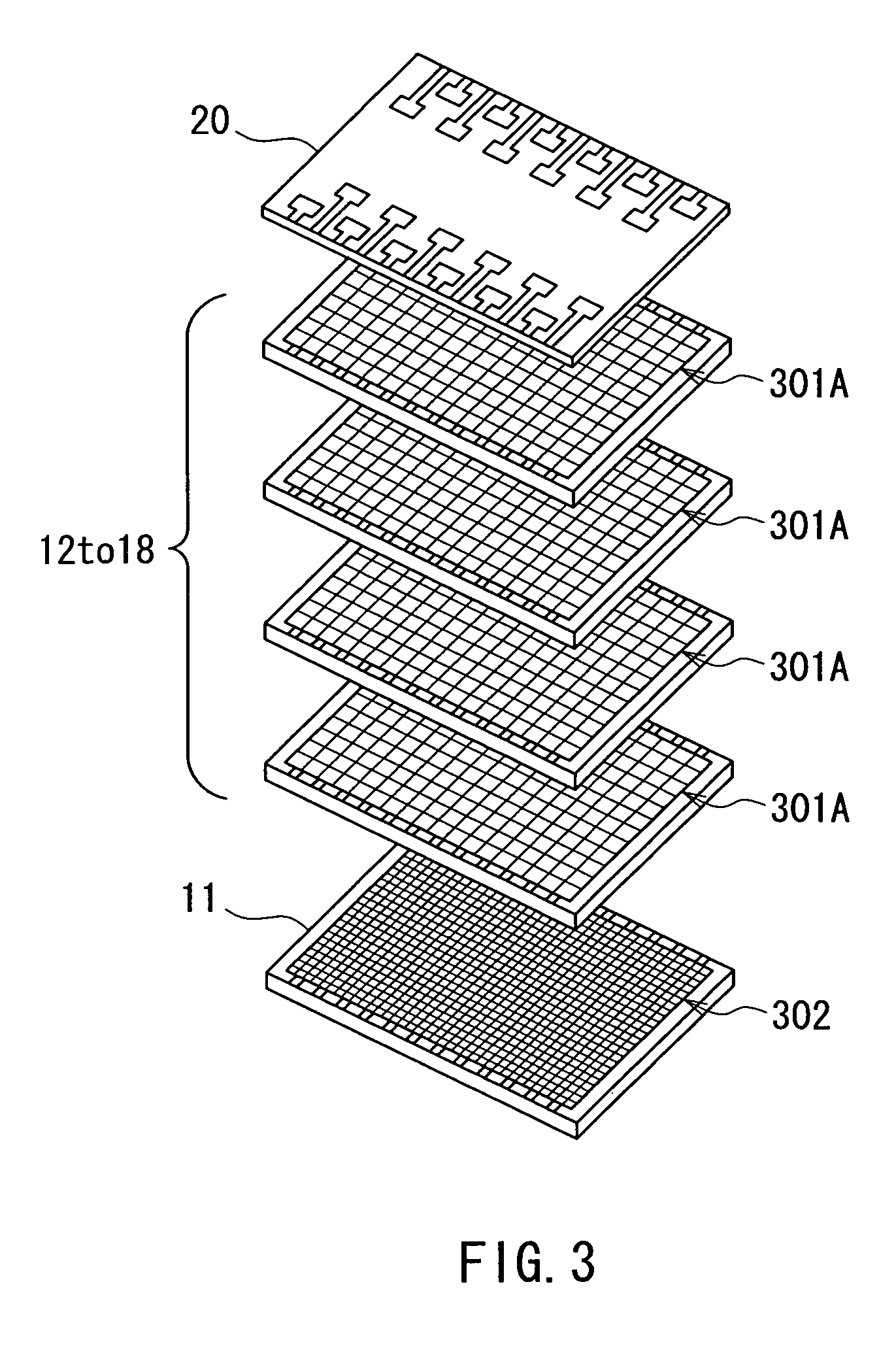Layered chip package that implements memory device
a memory device and chip technology, applied in the field of layered chip packages, can solve the problems of increasing the cost of the layered chip package, affecting the high-speed operation of the circuit, and difficulty in reducing the distance between the electrodes, so as to increase the reliability of the wiring and facilitate the formation of wiring
- Summary
- Abstract
- Description
- Claims
- Application Information
AI Technical Summary
Benefits of technology
Problems solved by technology
Method used
Image
Examples
first embodiment
[0079]Embodiments of the present invention will now be described in detail with reference to the drawings. Reference is first made to FIG. 1 to describe the configuration of a layered chip package of a first embodiment of the invention. FIG. 1 is a perspective view of the layered chip package of the first embodiment. As shown in FIG. 1, the layered chip package 1 of the first embodiment includes a main body 2 that is rectangular-solid-shaped. The main body 2 has a top surface 2a, a bottom surface 2b, a first side surface 2c and a second side surface 2d facing toward opposite directions, and a third side surface 2e and a fourth side surface 2f facing toward opposite directions.
[0080]The layered chip package 1 further includes wiring disposed on at least one of the side surfaces of the main body 2. In the example shown in FIG. 1, the layered chip package 1 includes first wiring 3A disposed on the first side surface 2c of the main body 2, and second wiring 3B disposed on the second sid...
second embodiment
[0159]A second embodiment of the present invention will now be described. In the layered chip package 1 of the second embodiment, the four side surfaces 2c to 2f of the main body 2 include at least one first-type side surface on which the wiring 3 is disposed, and at least one second-type side surface on which the wiring 3 is not disposed. The appearance of the layered chip package 1 of the second embodiment is, for example, as shown in FIG. 1 as in the case of the first embodiment. In this example, of the four side surfaces 2c to 2f of the main body 2, the side surfaces 2c and 2d are the first-type side surfaces while the side surfaces 2e and 2f are the second-type side surfaces.
[0160]In the second embodiment, the four side surfaces 30c to 30f of the first-type or second-type semiconductor chip 30 include at least one first-type side surface that has the insulating portion 31 between itself and the at least one first-type side surface of the main body 2, and at least one second-typ...
third embodiment
[0164]A third embodiment of the present invention will now be described. Reference is now made to FIG. 36 to describe the configuration of an electronic component of the third embodiment. FIG. 36 is a perspective view of the electronic component of the third embodiment. FIG. 37 is an exploded perspective view of the electronic component of FIG. 36. The electronic component of the third embodiment implements a memory device such as a flash memory, DRAM, SRAM, MRAM, PROM or FeRAM.
[0165]As shown in FIG. 36 and FIG. 37, the electronic component 200 of the present embodiment includes a layered chip package 201, and a circuit layer 210 bonded to the layered chip package 201. In the layered chip package 201 of the present embodiment, all the layer portions 10 included in the main body 2 are the first-type layer portions. In other words, all the layer portions 10 each include the first-type semiconductor chip 30. The first-type semiconductor chip 30 includes a plurality of memory cells. The...
PUM
 Login to View More
Login to View More Abstract
Description
Claims
Application Information
 Login to View More
Login to View More - R&D
- Intellectual Property
- Life Sciences
- Materials
- Tech Scout
- Unparalleled Data Quality
- Higher Quality Content
- 60% Fewer Hallucinations
Browse by: Latest US Patents, China's latest patents, Technical Efficacy Thesaurus, Application Domain, Technology Topic, Popular Technical Reports.
© 2025 PatSnap. All rights reserved.Legal|Privacy policy|Modern Slavery Act Transparency Statement|Sitemap|About US| Contact US: help@patsnap.com



